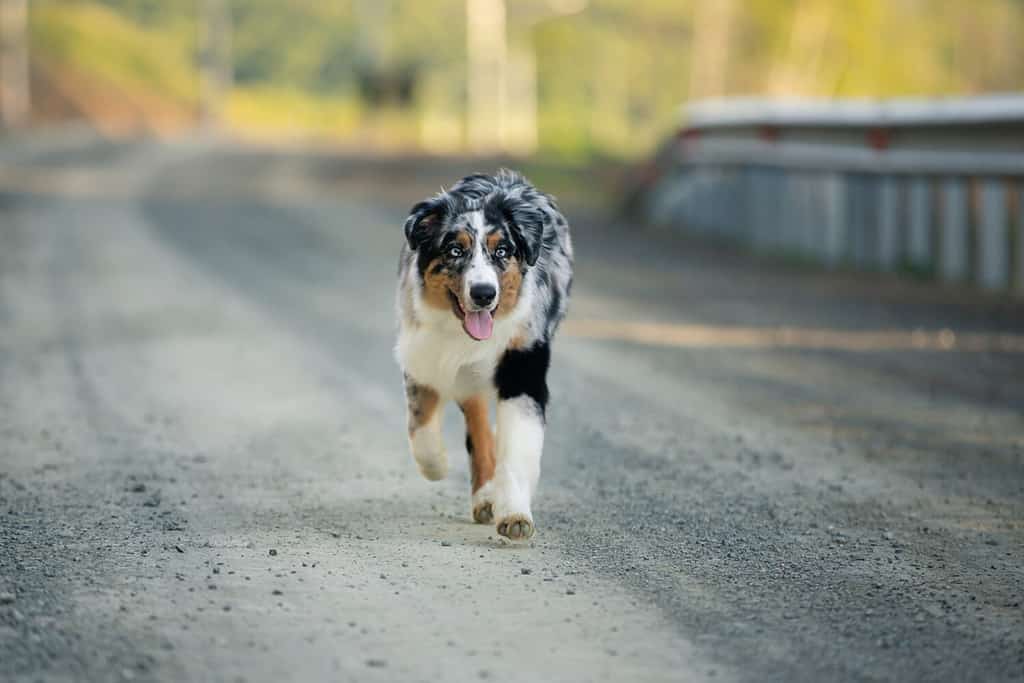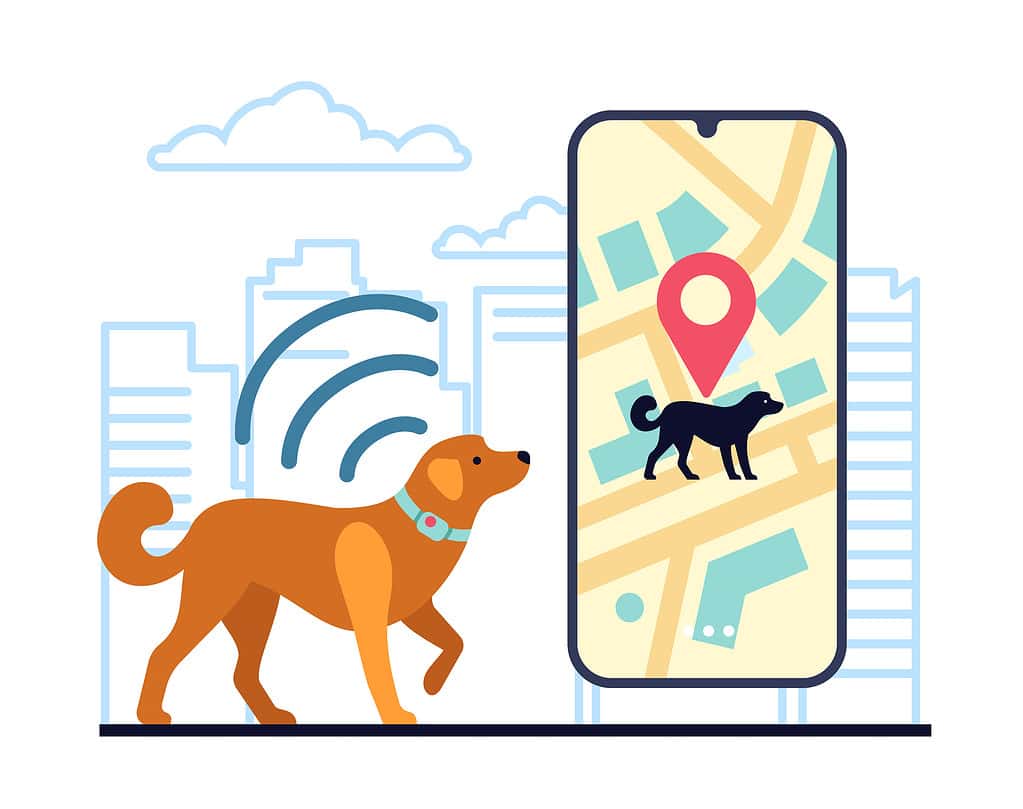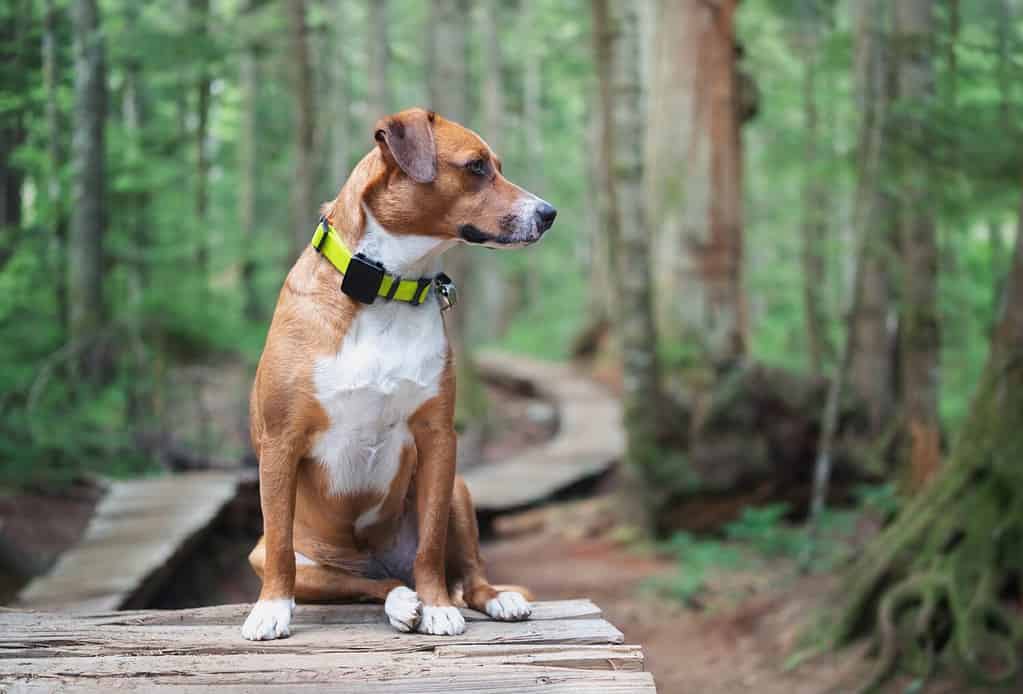Have you ever struggled to get bags of groceries through the front door, only to have your little canine friend rocket out of the door between your legs? What if you couldn’t catch him, and he didn’t come back?
There are an estimated 80 million dogs in the United States. Every year, 5 percent of them, or four million dogs, are lost or stolen. That’s a scary statistic and a great sales point for GPS dog trackers. Imagine a device that relays your lost baby dog’s location in real-time so you can track him down and bring him home. Some can even tell you information about your dog’s health and behavior, including heart rate. Despite all the obvious plusses, though, there are some pretty good reasons you may not want to invest in a GPS tracker for your dog. You’ll want to consider these before making your decision.

Tragically, four million dogs go missing every year.
©Anastasiia Cherniavskaia/Shutterstock.com
1. Limited Range
You have several options for tracking your dog, some more useful than others.
- Bluetooth trackers pair directly with your phone, but the range is only 40 feet or so. Unless your dog is lost inside your house, this won’t be of much use. However, some of them provide additional health information on your dog, which can be helpful in monitoring their activity level.
- Radio trackers require you to have a hand-held transceiver rather than tracking your dog on your phone. They can have a 12-mile range but unless you’re in the middle of a big empty field, the actual range will be much lower, as terrain, houses, trees, and cars block the signal.
- Cellular trackers communicate with your phone via cell phone towers. These are good choices if you’re tracking your dog in an urban area. If you’re out of range of a tower and have poor reception, you’re out of luck.
- GPS trackers use the Global Positioning Satellite system. A chip in your dog’s collar picks up satellite signals to triangulate the animal’s position and relay it to you. Depending on the model you buy, a GPS collar can be trackable worldwide. However, objects can block GPS signals.
2. Cost

Using high technology to track your dog is expensive!
©JStaley401/Shutterstock.com
GPS trackers can cost in the range of $20-$220 and you get what you pay for. The more middle-to-expensive brands will give you more data on your pet, have longer battery life, weigh less, and have other desirable features. On top of this up-front cost, many GPS trackers require a monthly subscription fee to use their proprietary app for tracking your animal. Without it, you may have no functionality or very limited functionality. Fees can range from $5-$20 a month. That’s $60-$240 a year.
3. Battery Life

Batteries on GPS trackers are likely to run down faster than your dog will.
©Bonsales/Shutterstock.com
Battery life differs according to the product you buy. Some last only about eight hours; others up to a year. Advertised battery life is drastically shorter depending on the settings of your device and whether it is continuously tracking your dog in real time. Tests on some devices, for example, showed a 6% decline in battery life in just 10 minutes when continuous tracking capabilities were engaged. Battery life may not matter to you if you’re going to use the device only on short walks. But if you plan to leave the collar on the dog all the time for continuous tracking, this is an issue you should consider.
4. Weight

If your dog is tiny, even a small GPS device can hurt its neck.
©Andi Berger/Shutterstock.com
Older technology and larger batteries make the collar heavy on your dog’s neck, especially for smaller breeds. Before buying, compare the item’s weight with your dog’s weight. For a small animal, even a relatively light tracker can be the equivalent of a human wearing a necklace with a laptop computer attached to it! Imagine what that does to your dog’s neck over time. For cats and small dogs, the device should weigh no more than 2% of the animal’s body weight.
5. Waterproof

Your dog is waterproof, but is your GPS tracker?
©84kamila/Shutterstock.com
Many GPS trackers can be safely submerged up to 3 feet deep in water, but none of them are completely waterproof. Some are advertised as “water-resistant” or “rainproof.” If your dog jumps into a pool, wades through a creek, or rolls thoroughly in a mud puddle, the tech may fail.
6. Glitchy Connections

©iStock.com/Eudyptula
In the real world, some GPS devices do not connect immediately and easily to your WiFi network. They may also disconnect during use and don’t always inform you that this has happened.
7. International Connectivity

GPS collar on dog to track city location. Smartphone app. Urban map. Pets geolocation. Puppy direction monitoring. Domestic animal tracking. Mobile technology. Phone town navigator. Vector concept
©Nadezhda Kurbatova/iStock via Getty Images
Not all GPS devices work internationally. Some work only in the U.S. and Canada, for example. For most people, this won’t be an issue, but if you plan to vacation with your dog or split your year between more than one country, you’ll definitely want to investigate this issue.
8. Accuracy and Data Refreshing

©sophiecat/Shutterstock.com
Devices differ in how accurately they can pinpoint your animal’s exact location and how often the data is refreshed. They may only give you a broad range of yards where your dog might be located. By the time you have thoroughly searched that area to no avail, your device may finally refresh and it turns out your pup has had 5 minutes to run at top speed in another direction. Obviously, this will be extremely frustrating and unproductive as you’re searching for a lost dog.
9. Collars Can Be Lost or Removed

Dog with a vibrating dog collar.
©Parilov/Shutterstock.com
Though it’s not likely a friendly beaver will show up to help your pup remove his collar (or muzzle, ala Lady and the Tramp), collars can come off your dog in a variety of other ways. They can snag on tree limbs and pull off, or they can be removed by a person who wants to steal your dog. Microchipping is a more permanent way to identify your dog, as the chip is placed inside the body. However, microchips are only useful if the dog turns up at a shelter and staff scans the chip. They cannot provide real-time tracking the way a GPS device can.
10. GPS Can Make Errors
GPS signals can reflect off surfaces or suffer from atmospheric interference. Wet tree foliage can also interfere with GPS signals. This can increase the perceived distance between the satellite and the receiver, creating an inaccurate position on the map for your GPS device.
11. Privacy Concerns

If your dog can be tracked by GPS, you can be tracked by that same GPS when you walk your dog.
©CLICKMANIS/Shutterstock.com
With any GPS device, there is a risk that someone could hack it or use it to track your location without your consent. Any device connected to a network is vulnerable to hacking. If your dog’s GPS were hacked, it could tell an unscrupulous person when and where you take your dog on a walk through a park. This information could also be easily available to family members with access to the tracking information: anything from teenagers finding an opportunity to get into trouble to an ex-partner violating a restraining order. Now that’s scarier than losing your dog!
The Bottom Line
Whether a GPS tracker is right for your fuzzy friend depends on a lot of factors. How big is the dog? Does it spend most of its time indoors or outdoors? Do you live in an urban or rural area? Will the dog wear the collar all the time or only on outdoor walks? Will you travel outside the country with your dog? Does your doggie gravitate toward water or shy away from it? And does it have any animated friends with sharp teeth? It also depends on whether you have reason to have serious privacy concerns and would feel safer remaining untrackable, yourself, on the grid. There are a lot of different products on the market with a variety of features and price points. Use this information as a starting point to research which device meets your needs.
The photo featured at the top of this post is © Nadezhda Kurbatova/iStock via Getty Images
Ready to discover the top 10 cutest dog breeds in the entire world?
How about the fastest dogs, the largest dogs and those that are -- quite frankly -- just the kindest dogs on the planet? Each day, AZ Animals sends out lists just like this to our thousands of email subscribers. And the best part? It's FREE. Join today by entering your email below.
Thank you for reading! Have some feedback for us? Contact the AZ Animals editorial team.







